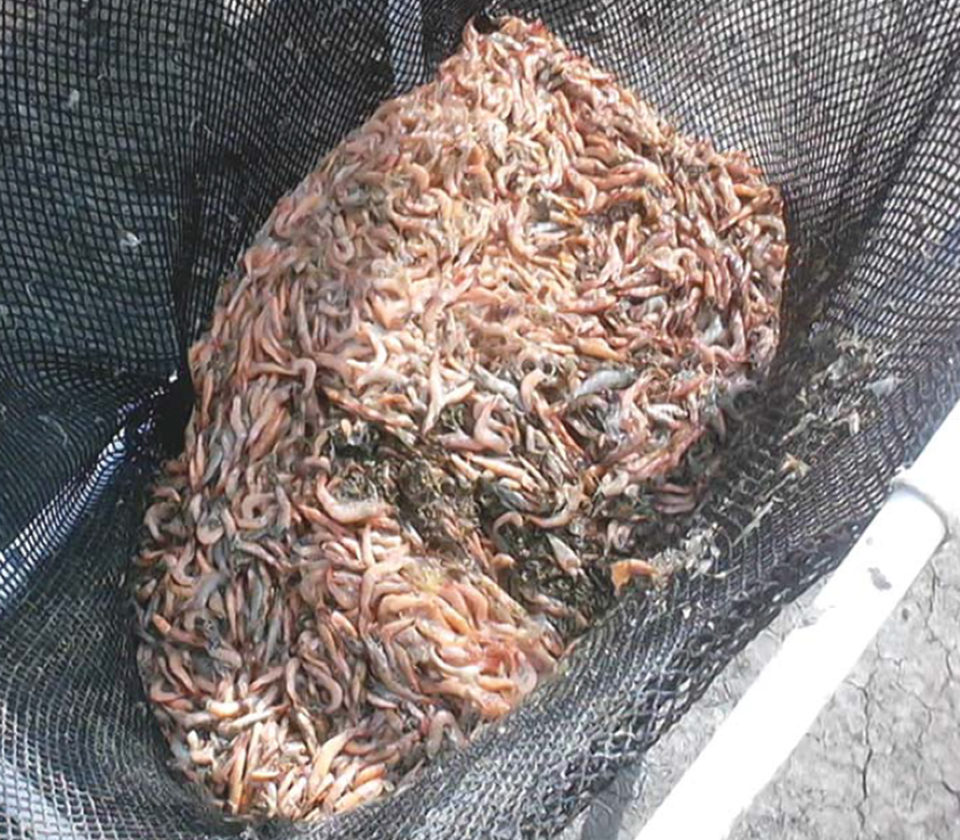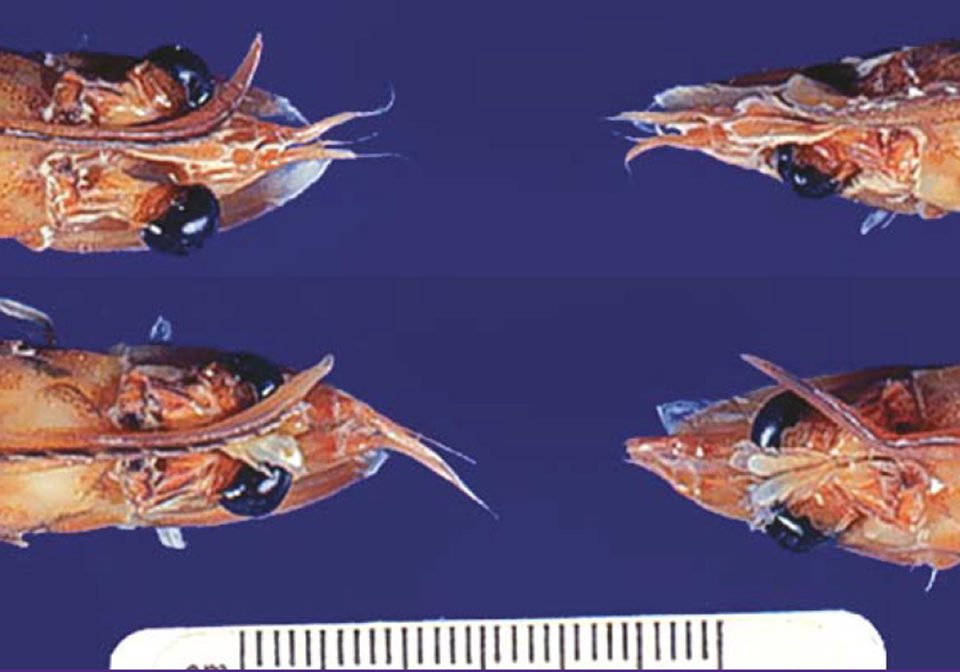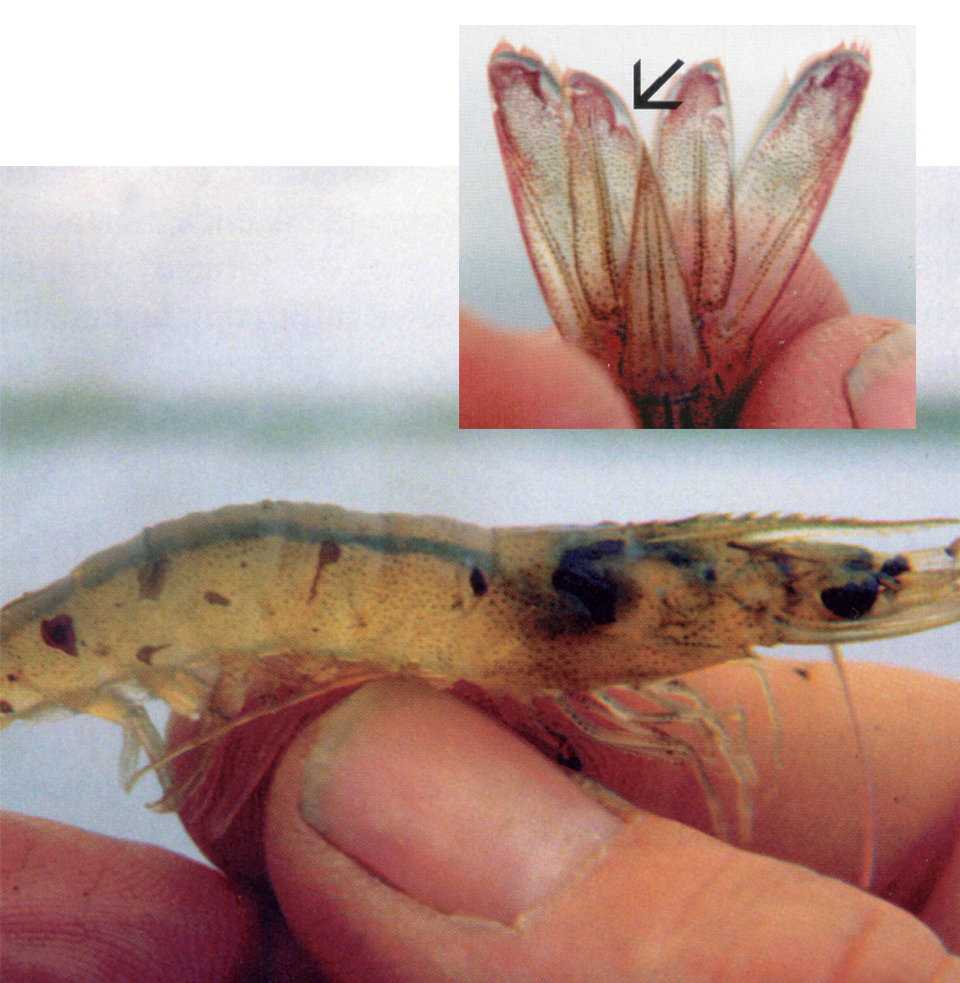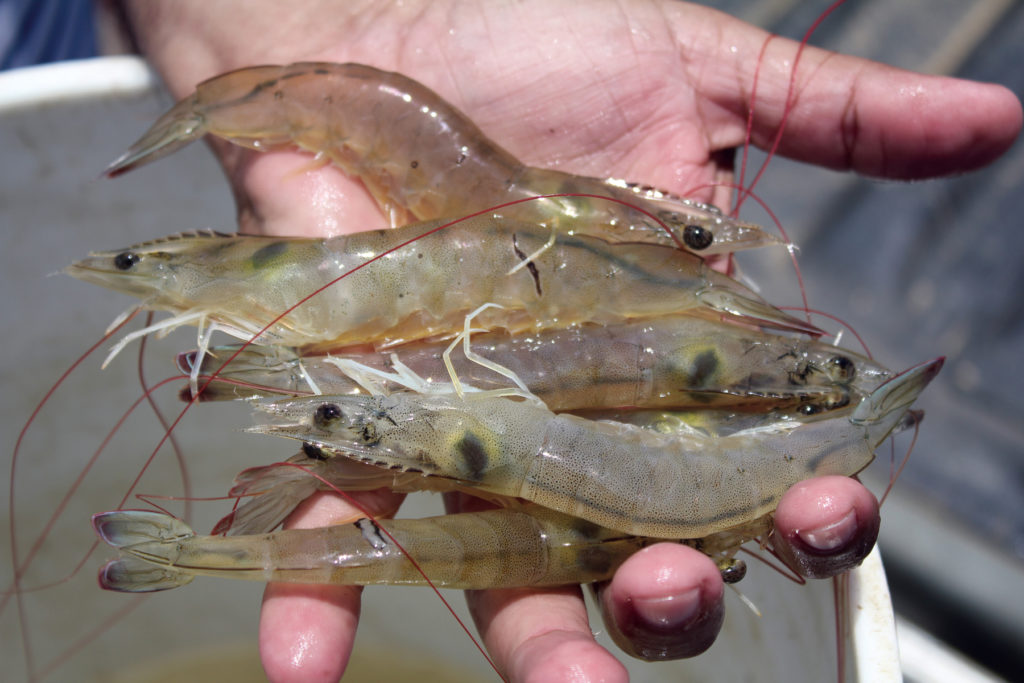Crustaceans can carry lifelong, persistent infections without any gross or histological signs of infection

The greatest risk by far for the spread of diseases may lie with the careless, cross-boundary movement of living animals destined directly for aquaculture facilities. Food and Agricultural Organization statistics show that about 65 percent of the exotic species introductions have been intentional, and that 69 percent of these (39 percent of the total) were done for aquaculture.
The vast majority (82 percent) of introduced species have been finfish, followed distantly by mollusks (9 percent), and crustaceans (6 percent). All translocated animals have the potential to carry pathogens, the most ominous of which are viral and parasitic diseases that would otherwise have very little chance of being translocated.
ICES guidelines
Because of the growing perception of environmental and disease threats associated with translocation of living marine animals and plants, the International Council for the Exploration of the Seas (ICES) in 1973 and 1994 introduced guidelines for reducing the risk of pathogen introduction. Briefly, they recommended that imported broodstock populations should be established in approved quarantine facilities.
The progeny, but not the original import, should be transplanted into the natural environment or farms only if no diseases or parasites became evident during the quarantine period. The quarantine duration should be at least one complete life cycle, regardless of the stage at which the animals were introduced.
All effluents from the quarantine facilities should be disinfected in an approved manner, killing all living organisms. If evidence of disease was obtained during the quarantine period, the introduced animals and their offspring would be destroyed immediately and the facility sterilized.
SPS agreement
In addition to the ICES code, signatories to the World Trade Organization General Agreement on Tariffs and Trade are bound by the Agreement on the Application of Sanitary and Phytosanitary Measures (“SPS agreement”). The SPS agreement applies to all sanitary and phytosanitary measures which directly or indirectly affect international trade, including trade in live organisms. It permits those measures necessary to protect human, animal, or plant life or health, but only if they are based on scientific principles.
The measures cannot be maintained without sufficient scientific evidence, and must not arbitrarily or unjustifiably discriminate between members where identical or similar conditions prevail. In particular, it states that measures cannot be applied in a manner that would constitute a disguised restriction on international trade.
SPF stocks
The risk of introducing exotic pathogens can be reduced significantly by using specific pathogen-free (SPF) stocks. However, in addition to possible deficiencies in SPF technology, other disease problems can develop from unknown pathogens in imported populations. This can be a particular problem with shrimp and other crustaceans.
SPR strains
For shrimp, another approach to viral diseases is to develop resistant strains or use shrimp species that are “specific pathogen-resistant” (SPR), regardless of their pathogen status. However, “resistant” shrimp sometimes carry the relevant virus as a persistent infection and are capable of introducing it to other populations.
Even if a virus of the same name is already present in a native population, new strains can be introduced with SPR stocks. In addition, stress during farming can trigger increased viral replication in shrimp, resulting in disease outbreaks. There is also a danger that an exotic virus could mutate into a more pathogenic strain. This is particularly important for Taura Syndrome Virus and Yellow Head Virus, since RNA viruses are known to mutate and evolve rapidly.
Danger of shrimp translocation
Shrimp and other crustaceans and arthropods in general are much more dangerous candidates than vertebrates for translocation. This is because they differ fundamentally from vertebrates in their mode of interaction with viruses (Table 1). This difference results in the tendency for crustaceans to carry lifelong, persistent infections without any gross or histological signs of infection.
Flegel, General characteristics of shrimp and vertebrate, Table 1
| Shrimp | Vertebrates |
|---|
Shrimp | Vertebrates |
|---|---|
| No response against pathogen | Response against pathogen |
| Survivors usually infected – pathogen persists | Survivors usually not infected – pathogen clears |
| Infectious to others | Not infectious to others |
| Tolerance to viruses normal | Tolerance to viruses rare |
| No antibodies found in serum | Antibodies found in serum |
| Multiple active infections normal | Multiple active infections rare |
| Extremely heavy viral production | Moderate viral production |
Past failure to appreciate this fact resulted in three major shrimp epizootics that collectively caused economic losses of several billion U.S. dollars since the beginning of large-scale shrimp cultivation in the early 1980s.

Shrimp response to viral pathogens
Little has been published on the mechanistic response of arthropods to viral pathogens, although interest has gained dramatically due to the urgency in solving problems with massive losses in penaeid shrimp cultivation due to viral pathogens.
Laboratory experiments in the past decade indicated that, in general, shrimp and other arthropods are capable of a specific, adaptive response that cannot be explained by current understanding of their cellular and humoral defenses.
Recent field research results with shrimp and insects supports predictions that memory is provided by the viral pathogens themselves in persistent infections that reduce the severity of disease. The well-known phenomenon of defective interfering viral particles probably plays an important role in this process, but it cannot explain the cross protection recently described for heterologous viral infections in shrimp and insect cells. Homologous and heterologous reduction in disease severity as a result of persistent viral infections may be a key process that evolved from host viral interaction in the arthropod line.
Other recent publications have shown that prior exposure of shrimp to inactivated viral particles or envelope proteins can protect them from lethal viral challenge for a short time. In contrast, persistently infected shrimp appear to maintain protection as long as they remain infected. One would therefore expect the protection to have specificity, as was earlier proposed. However, heterologous protection remains unexplained.
Since treatment with inactivated viruses or coat proteins runs out relatively quickly, it should not be called vaccination and compared to long-term protective, antibody-based immunological memory, such as that gained by vaccinations in vertebrates. There is no evidence that shrimp or other arthropods have a comparable defense system.
IHHNV
Infectious Hypodermal and Hematopoietic Necrosis Virus (IHHNV) was first discovered in blue shrimp (Penaeus stylirostris) and white shrimp (P. vannamei) in the Americas in the early 1980s. It was believed to have been introduced by the importation of live experimental stocks of black tiger shrimp (P. monodon) from Asia.
It is important to understand that IHHNV was unknown before this jump from P. monodon because it generally produces no adverse effects or signs of disease in P. monodon. Often it can be detected only by using polymerase chain reaction assays.
Although IHHNV occurs in several species of wild and cultured penaeid shrimp throughout the world, it has been reported to cause acute epizootics and mass mortality only in P. stylirostris, especially in juveniles and subadults. By contrast, in P. vannamei, it does not cause mortality but rather reduced, irregular growth and cuticular deformities – gross signs collectively referred to as Runt Deformity Syndrome (RDS). In spite of no mortality, commercial losses from RDS can be high.
P. stylirostris and P. vannamei that survive IHHNV epizootics can carry the virus for life and pass it on by vertical and horizontal transmission. The infected adult carriers show no signs of disease or mortalities. Vertically infected larvae and early postlarvae of P. stylirostris do not become diseased, but massive mortalities can occur in juveniles at 35 days or more. P. indicus and P. merguiensis appear refractory to infection.
This was the first example of a very costly epizootic caused by an unknown virus that jumped from one grossly healthy shrimp species to another. Unfortunately, the lesson went unheeded and subsequent epizootics by new viruses occurred.
(Editor’s Note: This article was originally published in the December 2005 print edition of the Global Aquaculture Advocate.)
Now that you've reached the end of the article ...
… please consider supporting GSA’s mission to advance responsible seafood practices through education, advocacy and third-party assurances. The Advocate aims to document the evolution of responsible seafood practices and share the expansive knowledge of our vast network of contributors.
By becoming a Global Seafood Alliance member, you’re ensuring that all of the pre-competitive work we do through member benefits, resources and events can continue. Individual membership costs just $50 a year.
Not a GSA member? Join us.
Author
-
Timothy W. Flegel, Ph.D.
Centex Shrimp and BIOTEC
Chalermprakiat Building
Faculty of Science
Mahidol University
Rama 6 Road
Bangkok 10400 Thailand
Tagged With
Related Posts

Health & Welfare
Dangers of viral pathogens in translocated shrimp, Part 2
International Council for the Exploration of the Seas (ICES) guidelines should be modified and closely followed to guard against the possibility of introducing new viral pathogens.

Health & Welfare
The Shrimp Book: Principal shrimp infectious diseases, diagnosis and management
Disease outbreaks in shrimp occur not only due to the presence of pathogens, but also to suboptimal culture conditions and system management.

Health & Welfare
A comprehensive look at the Proficiency Test for farmed shrimp
The University of Arizona Aquaculture Pathology Laboratory has carried out the Proficiency Test (PT) since 2005, with 300-plus diagnostic laboratories participating while improving their capabilities in the diagnosis of several shrimp pathogens.

Responsibility
A look at various intensive shrimp farming systems in Asia
The impact of diseases led some Asian shrimp farming countries to develop biofloc and recirculation aquaculture system (RAS) production technologies. Treating incoming water for culture operations and wastewater treatment are biosecurity measures for disease prevention and control.



